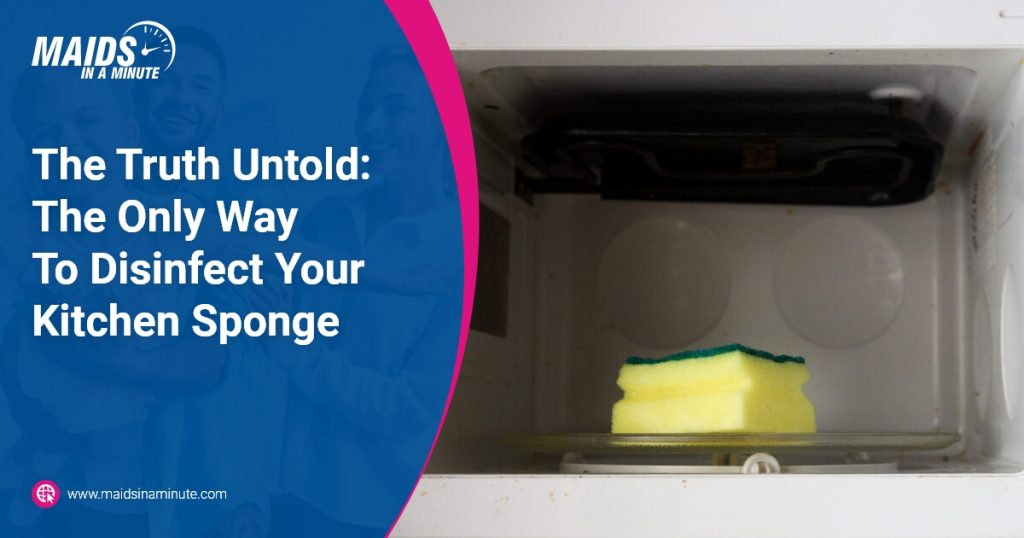Searching for a way to disinfect a kitchen sponge ends up being more dreadful than the sponge itself! Some say that microwaving is the best choice; others say that it makes it worse!
But the truth is plain and straightforward: ditching your sponge is the only way to get rid of the germs. However, you can do many things to keep the sponge cleaner and safer before it’s time to throw it away. Learn how to clean a kitchen sponge here!
How to keep a kitchen sponge clean for longer
The best practices you can do with your kitchen sponge are not about sterilizing it but making it safer for your household! Is there a way to keep microbes at bay? There are many things you can do to keep a sponge clean and safe!
Learn here how to disinfect a sponge!
Zap it in the microwave (or wash it in the dishwasher) every other day!
As mentioned before, you cannot kill all the bacteria in a kitchen sponge, but you can get pretty close. Most reliable sources recommend one of two sanitizing methods for your kitchen sponge: the microwave or the dishwasher.
Though the microwave method is faster and slightly more effective, it’s a bit riskier too. Also, choose the dishwasher method if your sponge has a metal scrubber!
Follow these steps for the method you chose:
Microwave method:
- Wet the sponge entirely and place it in the microwave. The sponge needs to be wet, or it could catch fire!
- Cook the sponge for 1 or 2 minutes, but don’t reach for it right away. The sponge is hot at this point!
- Wait 10-20 minutes to pick the sponge up. Just wring it up, and it’s ready to clean again.
Dishwasher method:
- Place your sponge in the dishwasher and run the hottest cycle.
- Use a dry cycle.
Another way to sanitize a sponge involves sinking it in a disinfectant solution (like full-strength white vinegar or bleach.) However, you can use one of the two methods described above! They are practical and reliable.
Tips and best practices for your kitchen sponge
Zapping your sponge in your microwave is not the only thing you can do to keep germs at bay. Here are some of the best tips and practices to protect your household from germy sponges!
1. Use separate sponges for each chore
Maybe it is common sense that you shouldn’t scrub the toilet with a dish sponge. But do you use the same sponge to clean the counters? Not every microbe is alike, and you could be picking up the different bacteria from the counters and putting them in your dishware.
Don’t use one sponge for all your tasks! Instead, as suggested in this article, you could transform your old dish sponges into a reused sponge for kitchen counters, bathrooms, or floors!
2. Let sponges dry after using them
A wet sponge is a perfect environment for bacteria—after all, bacteria love moisture. You can prevent the accelerated growth of microbes by keeping your sponge dry most of the time. After each use, wring it out well and let it air dry!
3. Keep meat-related residue away from your dish sponge
Harmful foodborne bacteria could come from raw food—especially raw meat. Avoid using your kitchen sponge to wash anything meat-related!
4. Change your sponge at least every two weeks
As said above, discarding the sponge is the only way to get rid of the microbes. Throw any smelly sponge right away! And keep changing it roughly every one or two weeks!
Are you looking for more helpful cleaning tips and tricks?
Maids in a Minute have helpful advice, tricks, and hacks to keep your home clean! Visit our blog page! Or, if you are looking for a helping hand with your chores, let us clean your home for you! Our home cleaners are the best in South Michigan! Learn more about our services!

